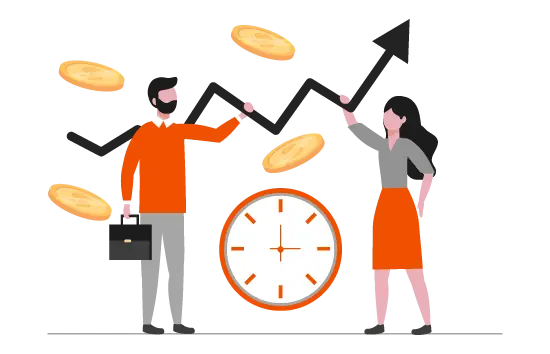Understanding the Customer Lifecycle: From Reach to Loyalty
As a business owner or marketer, you might have heard of the term “customer lifecycle” before. It’s a term that describes the journey that a customer goes through when considering, purchasing, using, and maintaining a product or service. Understanding the customer lifecycle is crucial for any business looking to acquire and retain customers. In this blog post, we’ll break down the different stages of the customer lifecycle and offer insights on how to optimize each stage to create a successful customer experience.
How to Optimize Reach in the Customer Lifetime Value (CLV) Cycle
The first stage of the customer lifecycle is reach. Reach refers to the point at which a potential customer becomes aware of a brand or product. This stage is all about generating interest and getting customers to engage with your brand. This can be achieved through various marketing tactics such as social media advertising, search engine optimization, and influencer partnerships.
To optimize the reach stage in the customer lifetime value (CLV) cycle, it’s important to have a strong brand identity and a clear value proposition. Your messaging should be tailored to target your desired audience and appeal to their needs. Additionally, it’s essential to have a user-friendly website that’s optimized for search engines. A strong presence on social media platforms can also help increase brand visibility and engagement.
How to Optimize Your Acquisition Stage for Higher
The acquisition stage is where customers consider a brand or product and make the decision to purchase it. To optimize this stage, businesses should focus on providing a seamless purchasing experience. This can be achieved with clear, user-friendly website navigation, simplified checkout processes, and multiple payment options.
It’s important to note that customers are more likely to purchase from a brand they trust. Building trust can be done by providing social proof, such as customer reviews, and offering quality customer support.
Optimize the Conversion Stage to Increase Customer Lifetime Value
The conversion stage is when a customer makes a first-time purchase. Optimizing the conversion stage is important for encouraging repeat purchases and building customer loyalty. Businesses can do this by providing a positive customer experience, starting with prompt and efficient order fulfillment and delivery.
After the conversion, it’s essential to follow up with customers to show appreciation for their business. This can be done with personalized emails, promotions, and surveys to gather feedback on the customer’s experience.
Optimize the Conversion Stage to Increase Customer Lifetime Value
The retention stage is where businesses aim to keep customers engaged to encourage repeat purchases. Retention can be accomplished by providing exceptional customer support. This includes addressing customer concerns promptly and offering relevant promotions.
Offering loyalty programs, exclusive content, and personalized experiences can also help businesses retain customers. It’s important to have a seamless and user-friendly customer experience throughout the entire lifecycle, not just during the initial purchase.
Unlocking the Power of Loyalty to CLV
The final stage of the customer lifecycle is loyalty. At this stage, businesses have successfully retained a customer and built a long-term relationship. Customers who are loyal to a brand are more likely to become brand advocates and refer new customers.
Businesses can optimize the loyalty stage by providing exclusive benefits to loyal customers. This includes personalized experiences, early access to new products, and exclusive content. Additionally, providing exceptional customer support can help businesses maintain these long-term relationships.
Conclusion
Understanding the customer lifecycle is imperative for any business looking to acquire and retain customers. By optimizing each stage of the lifecycle, businesses can create a seamless and positive customer experience. Businesses must start by generating interest and building trust; they should then provide a seamless purchasing experience and personalization to retain and evoke loyalty. By investing in the customer lifecycle, businesses can not only increase revenue but also build a long-term relationship with their customers.
